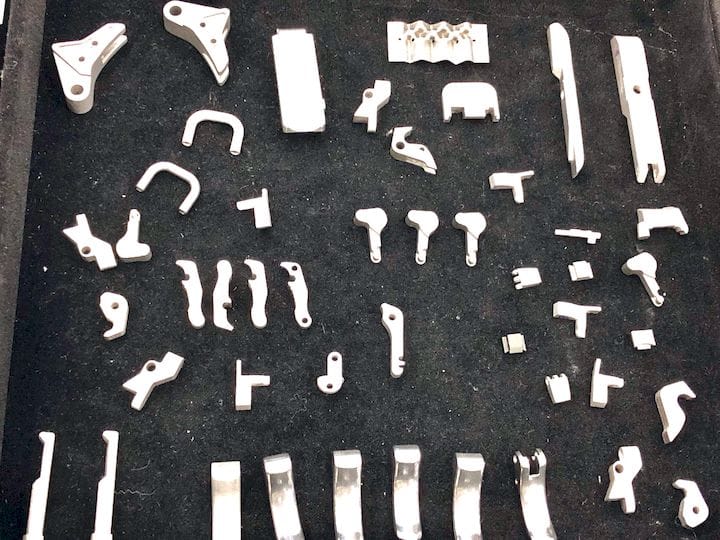![A collection of high quality small 3D printed metal parts by 3DEO [Source: Fabbaloo]](https://fabbaloo.com/wp-content/uploads/2020/05/image-asset_img_5eb0963a456fb.jpg)
We caught up with 3DEO last week and discovered they have reached a significant milestone.
If you’re not familiar with 3DEO, they are a California-based 3D printing startup specializing in providing a service for 3D printing production metal parts in very small sizes. It’s a pretty unique niche, and they seem to have mastered the technique.
According to 3DEO President Matt Sand, 3DEO has “perfected” their bead blasting process to enable very fine surface finishes. Sand explained to us that their 3D printed and finished surfaces are “on par with MIM” (metal injection molding).
![A challenging but small 3D printed metal part made perfectly by 3DEO [Source: Fabbaloo]](https://fabbaloo.com/wp-content/uploads/2020/05/image-asset_img_5eb0963a996ad.jpg)
An inspection of some sample parts revealed him to be correct; these parts were all extremely smooth and pretty much indistinguishable from MIM parts. In addition, the parts are quite durable as their customers attest.
Injection Molding Quality
Sand says that their entire production process is now automated, which allows for a lower production cost than typical 3D printing processes would permit. In fact, he says that 3DEO’s pricing per part is “piece competitive with MIM.”
This allows 3DEO to compete not only with other 3D printing services, but also directly against traditional CNC and MIM services for small metal parts. This is a notable milestone that few other 3D printing operations can boast, and is likely unique among small metal 3D printing operations.
![A small 3D printed metal part being produced by 3DEO in large quantities [Source: Fabbaloo]](https://fabbaloo.com/wp-content/uploads/2020/05/image-asset_img_5eb0963adc406.jpg)
And it does seem to be working. The part above is being produced in quantities of 10K units per month by 3DEO. Sand has another client requiring 24K parts per year, and some require around 100K parts per year.
He says last year 3DEO was producing “thousands” of units for clients, while this year they are typically doing “tens of thousands”. He anticipates next year they will have many clients requiring “hundreds of thousands”, so it definitely seems they are on to something.
Challenges To 3D Printing
3DEO does face some challenges, however. Like most 3D printing ventures, the game is to persuade prospective clients who use traditional technologies to instead try 3D printing. There are some advantages when doing so, in particular the notable absence of any required for “tooling up”: 3D printers just print. And the now-matched pricing doesn’t hurt that persuasion process.
![A tiny metal 3D printed part by 3DEO that did not have to be resized manually [Source: Fabbaloo]](https://fabbaloo.com/wp-content/uploads/2020/05/3deo-metal-part-resized-1_img_5eb0963b3072c.jpg)
However, Sand related an interesting story about one client, who requested the part above. After some time, Sand realized that the client had been manually grinding the provided parts by hand to slightly reduce their size. Why? Because the client had assumed 3DEO would require a re-tooling to change the part! Of course, this isn’t the case, as a quick digital modification to the 3D model would immediately complete the change request. But the client didn’t realize any of this, being uninformed of how 3D printing actually works.
It’s clearly still early in the lifecycle of 3D printing, but we’re growing.
Via 3DEO












1 comment
Comments are closed.